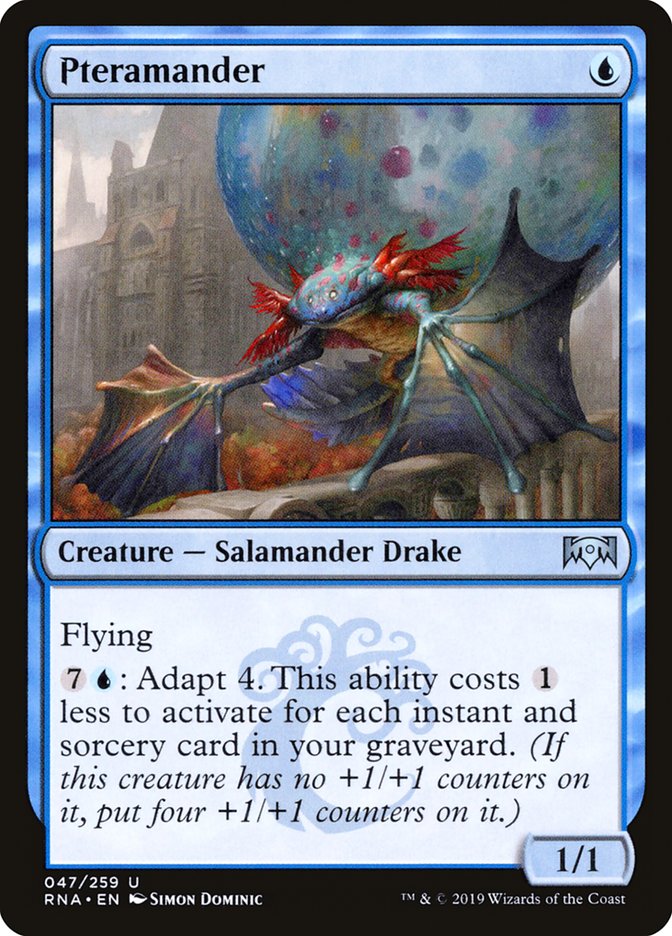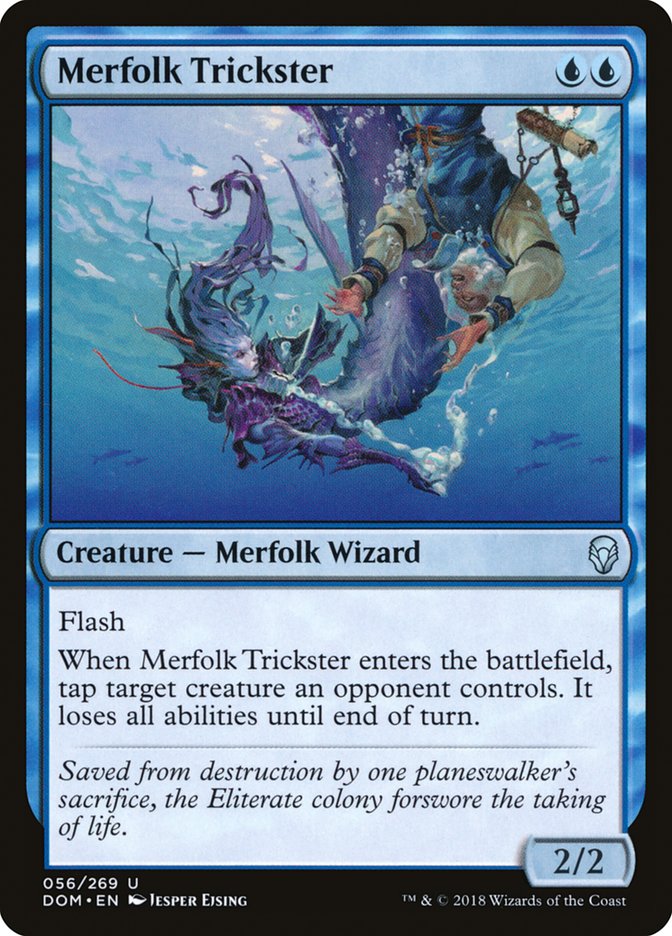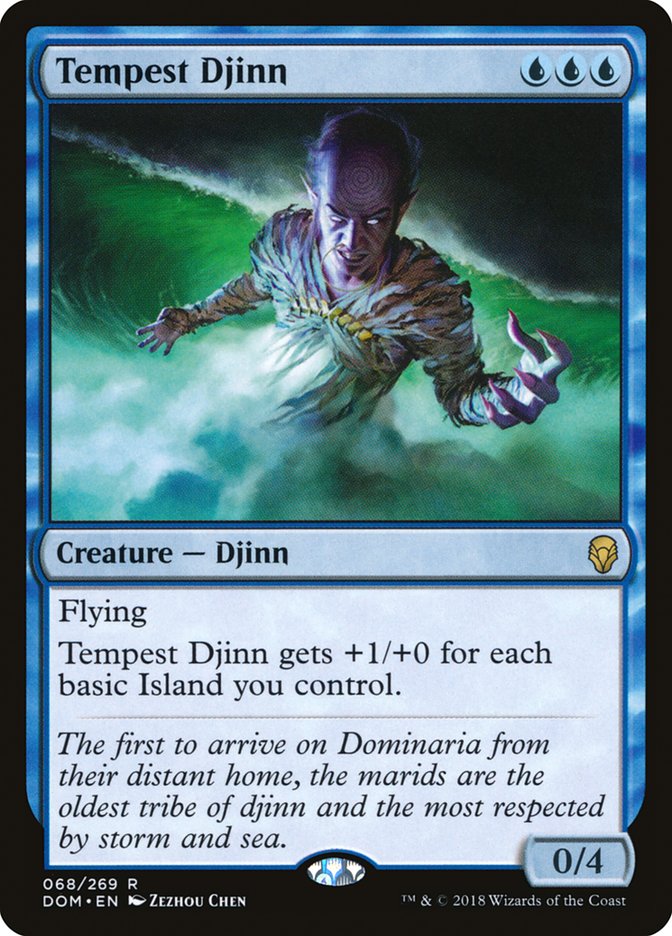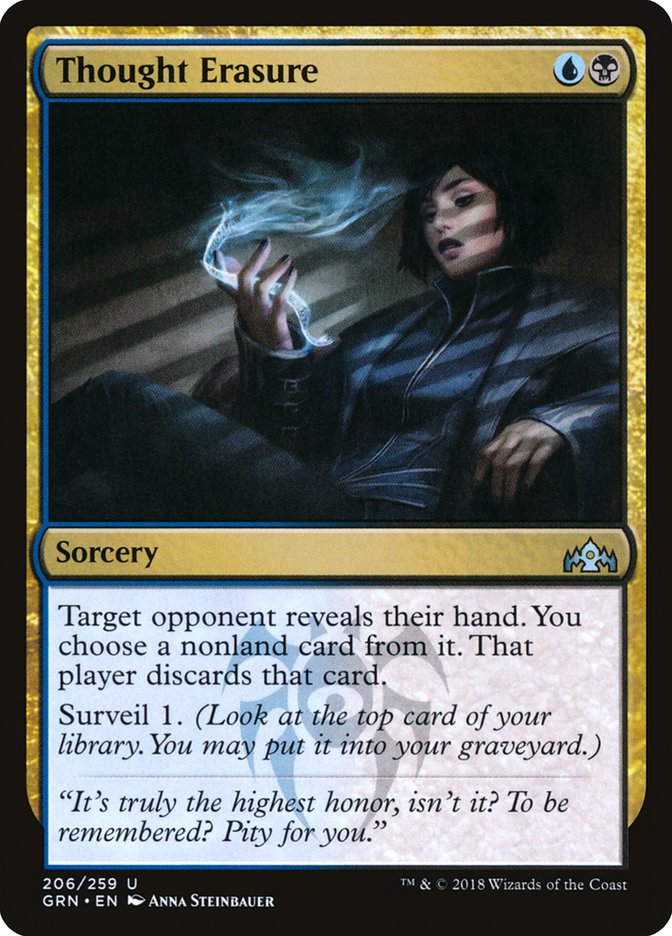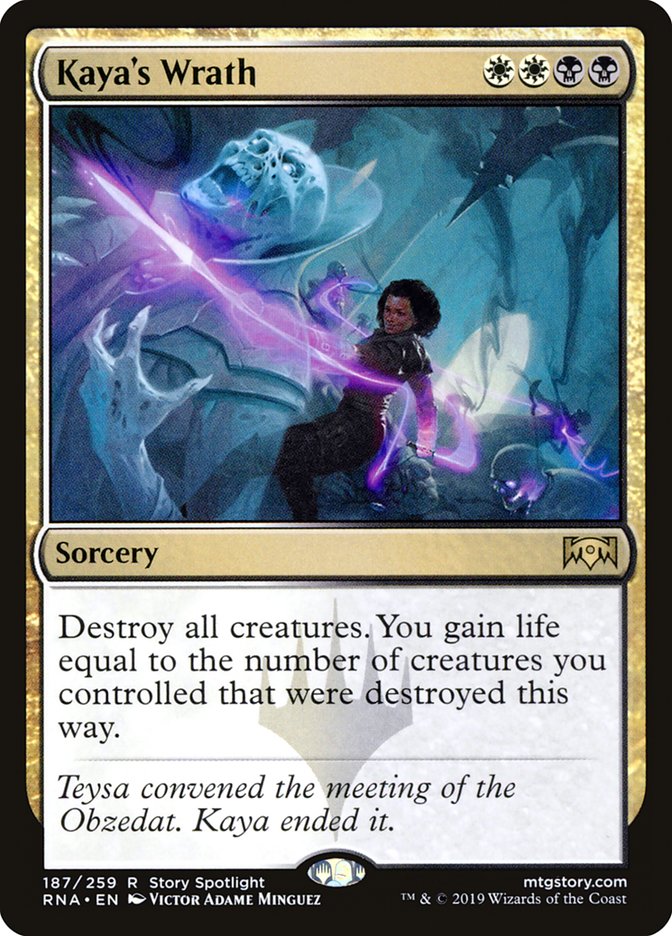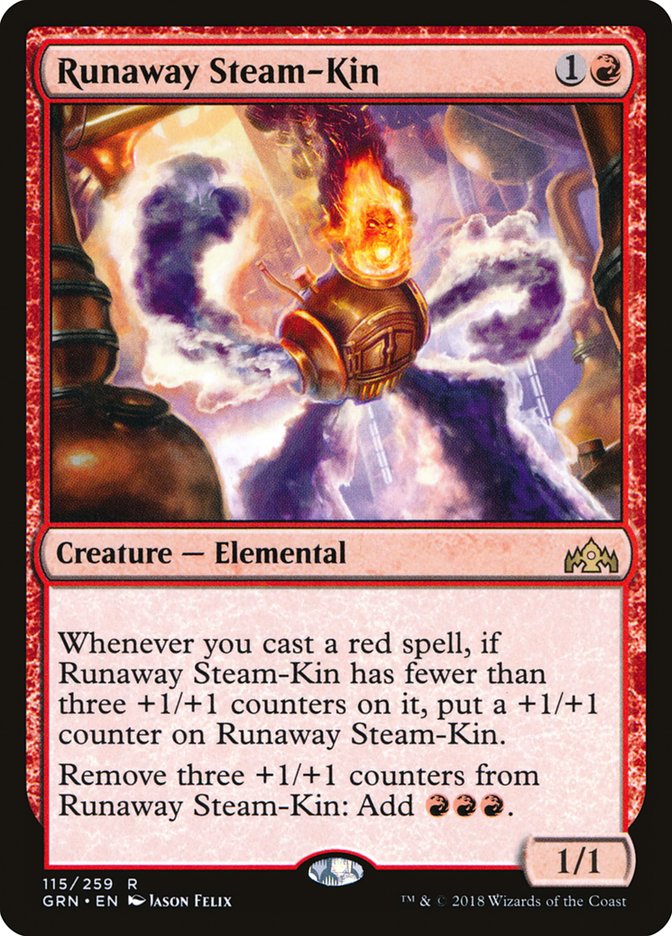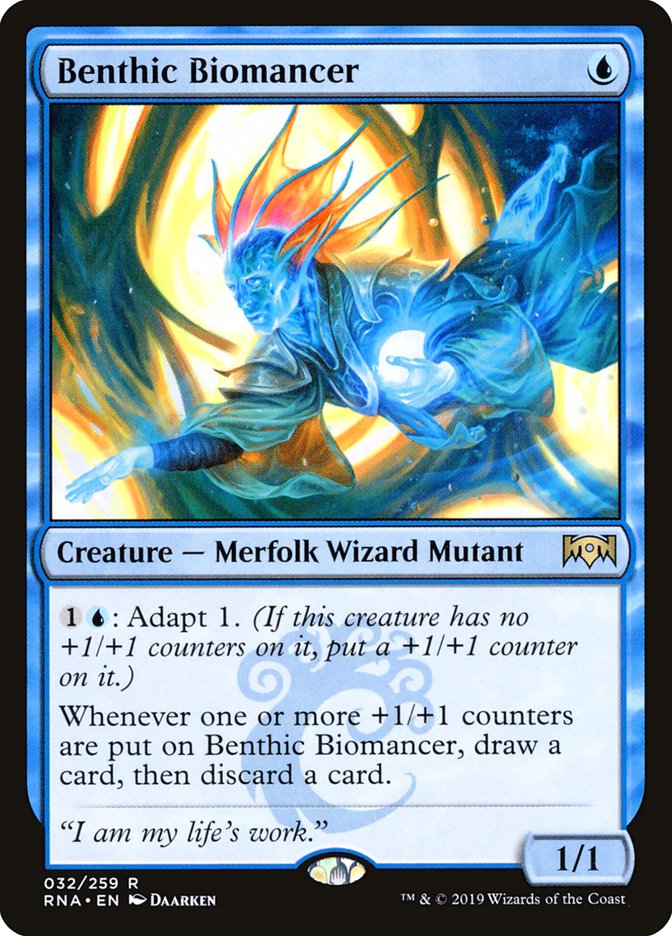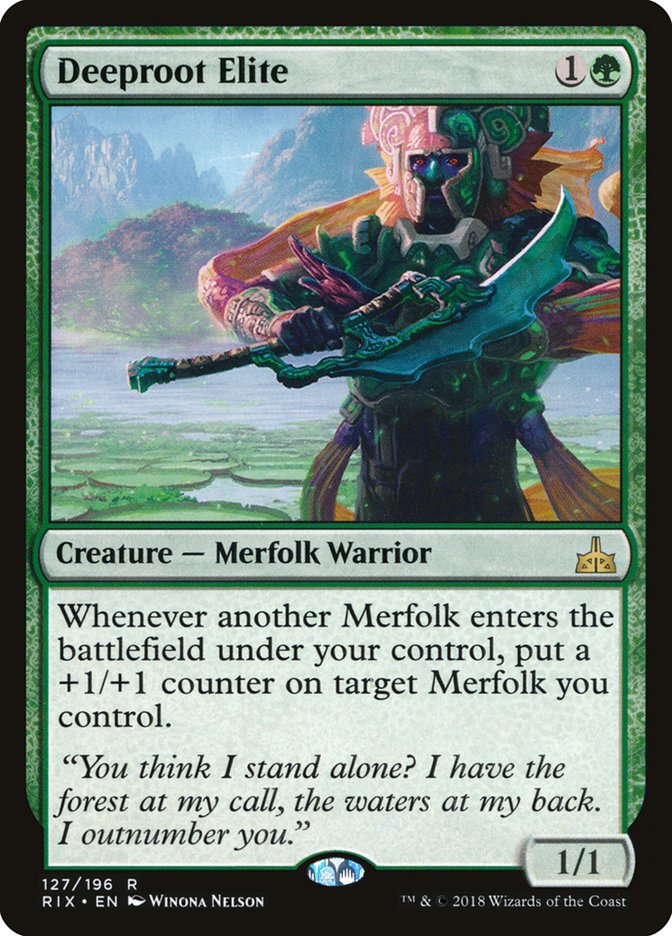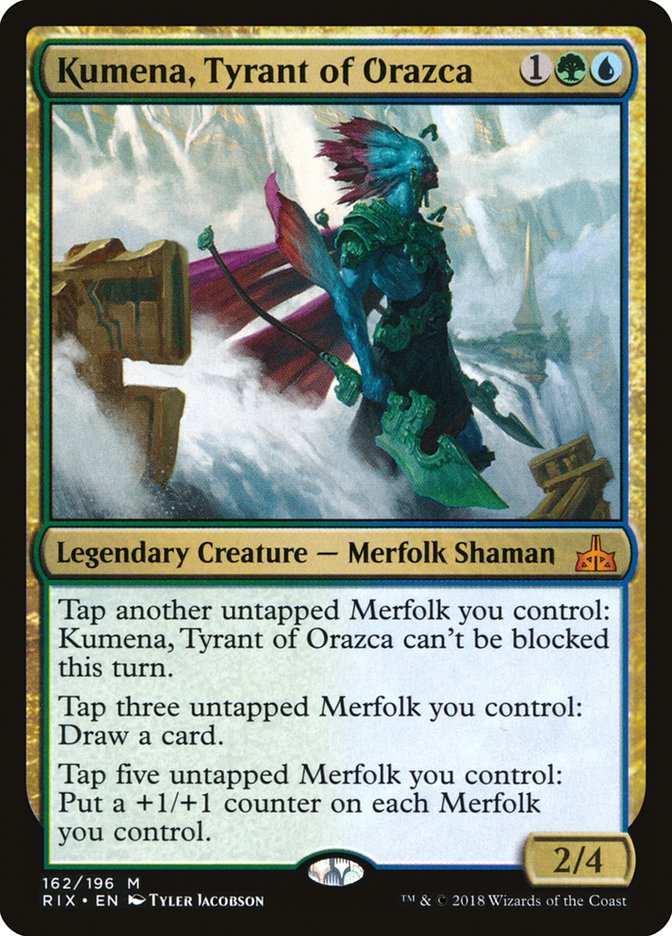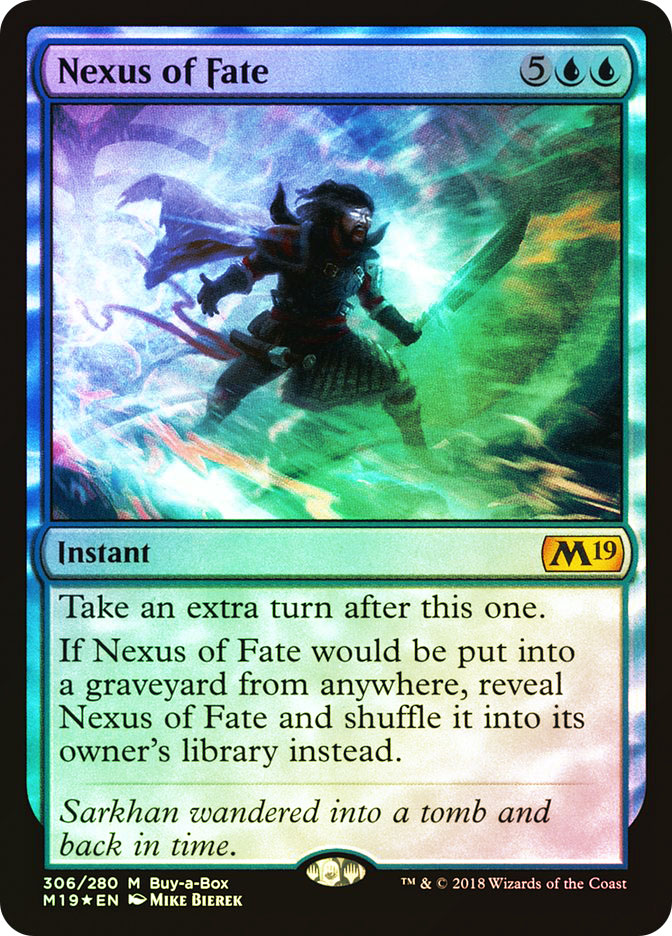Welcome to another edition of Fact or Fiction! Today, Patrick Sullivan, Ryan Overturf, and Todd Anderson are here to render their verdicts on five statements about Mythic Championship Cleveland. Don’t forget to vote for the winner at the end!
1. With Autumn Burchett’s win at Mythic Championship Cleveland, Mono-Blue Aggro is now the clear best deck in Ravnica Allegiance Standard.
Patrick Sullivan: Fact. Too many of the most popular creatures in Standard don’t line up the right way against flyers, and too many of the most popular removal spells cost too much to reliably resolve against Spell Pierce and Dive Down. Anyone taking drastic enough measures to manage those issues is left with a deck too weak (and too removal-dense) to fight against Sultai Midrange and Esper Control, and as long as those strategies occupy a reasonable share of the metagame I would give Mono-Blue Aggro top billing in Standard right now.
Mono-Blue Aggro has the hallmark of a top deck – its best draws are so good that even the cards that are ostensibly strong against it don’t get to resolve, or don’t get to resolve fast enough. Dive Down, Spell Pierce, and Negates make it tough sledding to get anything done with spells, and that leaves creatures. I think that’s the best way to attack Mono-Blue Aggro (Mono-White Aggro in particular), but those strategies often struggle against Tempest Djinn and blue has a wide array of sideboard options to make things miserable on someone leaning too heavily on creatures.
It was arguably the top deck prior to the Mythic Championship and then it put several people in the Top 8 and won the whole thing in spite of the room being prepared for it. I would strongly recommend Mono-Blue Aggro to anyone unsure of what to play in an upcoming Standard event.
Ryan Overturf: Fiction. I think the stronger argument for this position would be that three of the Top 8 were Mono-Blue, but even still Mono-Blue is a deck with several unfavorable matchups that can win in the right field with the right pilot. The format still strikes me as diverse as it ever was, though the deeper we get into this Standard format, the more important it is to know your deck and its matchups inside and out. A big part of the story of Burchett’s win has to do with their knowledge of Mono-Blue Aggro and their strong technical play, but beyond that they took advantage of the fact that other players are not nearly as versed with or against the deck.
Game 5 of the finals is largely the story of Autumn very patiently waiting for the right moment to land a Curious Obsession as well as casting the right counterspells at the right time, though it’s worth noting that Yoshihiko Ikawa made some costly errors in this match. In my mind, the entire contest was decided when he didn’t just fire off his Cast Down on Turn 2 of Game 5 on Autumn’s Pteramander. It’s not an exciting target by any means, though intimate familiarity with Mono-Blue will inform players that you really just need to use your mana every turn and take any trade that you’re offered. None of their cards are good and you must kill some of them.
To reiterate, I do not believe Mono-Blue to be the best deck, nor do I believe that it’s reasonable or meaningful to give any deck in this format that title. There are so many viable decks in this Standard format that it’s far more important to know how to play your deck against everything than it is to try to find whichever archetype is objectively the most powerful. Autumn played one of the good decks well; they did not win simply by registering the “best deck.”
Todd Anderson: Fact. While there are some bad matchups for Mono-Blue Aggro, it’s very clearly at the head of the class. Three copies making it into the elimination rounds is a big deal, and it is purposefully designed to punish slower decks that usually take advantage of Mono-Blue Aggro’s bad matchups. If you aren’t playing an archetype that specifically has a good matchup against Mono-Blue Aggro, I don’t think you’re going to come close to winning. Their good draws just squash control, Nexus of Fate, and a bevy of decks with minimal interaction, where their mediocre or bad draws are still serviceable.
People don’t understand just how good Mono-Blue Aggro is because it’s such a difficult deck to play optimally. One small mistake can cause your house of cards to come crashing down. If you want to do well with Mono-Blue Aggro, make sure to learn from the best. Watch Autumn Burchett’s matches. Watch Reid Duke’s matches. Watch all the content you can and play the deck a lot yourself. Seeing the spots where everything falls apart makes it much easier to figure out how to avoid those spots.
2. After Yoshihiko Ikawa’s finals appearance, it’s Esper Control (not Sultai Midrange) that’s the best control deck in Ravnica Allegiance Standard.
Patrick Sullivan: Fact. I guess it depends on how much of a “control” deck one believes Sultai Midrange to be, but it positions itself as such in most matchups so I won’t quibble too much with the definition. All opposing cards are “live” against Sultai Midrange – they play with a bunch of creatures, so removal is functional against them (though only up to a point, since so many of them generate value on their way in), and they play a bunch of expensive spells, so Negates and Spell Pierces do work also. The distinguishing feature of Sultai Midrange is the explore package, with Wildgrowth Walker serving to cheat a bunch of the aggressive matchups. Wildgrowth Walker isn’t nearly as effective against Mono-Blue Aggro as it is against the white or red counterparts, and if you’re considering cutting Wildgrowth Walker, I’m not sure what the incentive is to play the deck.
I put a significant premium on invalidating cards Game 1 and then forcing your opponent to guess if those cards will be good in the sideboarded games. Esper does exactly that, plus it has the density of cheap interaction required to get spells to actually resolve against Mono-Blue Aggro. With Wildgrowth Walker becoming a less and less reliable way to pick up matches against the popular aggressive strategies, I think Sultai Midrange is an increasingly dubious metagame call compared to playing Esper Control.
Ryan Overturf: Fact. It has been my contention for a while that Sultai Midrange is a very medium deck propped up significantly by the power of Hydroid Krasis. Every time I watch a game that is decided by a player chaining multiple copies of Krasis, it’s hard to believe that any of the other cards in the deck matter, whereas I’m rarely blown away by Merfolk Branchwalker. Sultai is more proactive, which means that Esper has to stress about what to play in its flex slots from week to week more, but if you get them right, I believe it to just be a more powerful deck. Ikawa’s maindeck Cry of the Carnariums were an excellent call for the MC due to their power against Mono-Blue and Mono-White, and he also used them to handily dismantle Luis Scott-Vargas’s Arclight Phoenixes.
Once again, I stress the importance of knowing your deck well more than playing whichever deck you think is abstractly better. Copying last weekend’s list is a huge disservice to yourself relative to playing a deck a ton and adapting it as the format develops.
Todd Anderson: Fiction. There were plenty of Sultai Midrange decks that performed well, putting up an 8-2 or better record. With the Mythic Championship being a split-format tournament that includes Draft, the “best” Constructed deck is often one that doesn’t even make it into the elimination rounds. With that said, I don’t think it’s a fluke that Sultai Midrange didn’t make it in, as virtually all the builds and archetypes in the Top 8 can pose problems for the archetype. But the best part of decks like Sultai Midrange is that they’re so malleable.
Midrange implies modality, in that you can shift to the aggressive or more controlling role given the opponent. Your sideboard plays a huge role, and how you build your threat and removal packages matters a lot. At the moment, I don’t know if Wildgrowth Walker is even a good Magic card, which ultimately messes with your Game 1 results. The best part about Sultai Midrange is that, based on the given metagame, you can shift your strategy by ten or more cards between tournaments to give yourself a better chance at success. And a heads-up deckbuilder will know when it’s time to switch away from Jadelight Ranger and Wildgrowth Walker into Thought Erasure, Thief of Sanity, and more spot removal to better interact with the Mono-Blue Aggro deck.
3. A Top 8 by Alex Majlaton with Gruul Aggro shows that red-based aggressive strategies are still plenty viable in Ravnica Allegiance Standard.
Patrick Sullivan: Fact. I’m still not completely sold on Experimental Frenzy in a world full of Spell Pierce, Absorb, Vivien Reid, Mortify, and the like. Its best matchup is the mirror, which has becoming less important as this Standard format has evolved. Setting aside that choice, I still believe in Mono-Red Aggro, with or without the small splash Alex Majlaton utilized en route to making the Top 8. I’ve been playing without the splash but Cindervines is extremely appealing and I’ll be giving that a try soon.
Ryan Overturf: Fact. Patrick actually plays these decks a lot (if you can believe that) so I’m sure he has plenty of thoughts on how the deck should be built and why it has been pretty quiet in the results department. Suffice to say that this format has so many powerful cards and interchangeable parts that basically every archetype has a fighting chance and the red decks are no exception. Both Viashino Pyromancer and Light Up the Stage are a little too powerful for me to believe there’s nothing there.
Todd Anderson: Fiction. I don’t think this deck is bad. In fact, I think this is one of the best-looking Mono-Red Aggro decks I’ve seen in quite some time. I’m personally of the opinion that Skewer the Critics is an unplayable Magic card, and any red mage worth their salt knows that Experimental Frenzy is where your bread gets buttered. With that said, I’m not sure if Mono-Red Aggro, in any form, is stable enough to compete in such a hostile metagame.
Esper Control supplanting Jeskai Control as the top control strategy puts a lot of pressure on Mono-Red. The incidental lifegain effects from Moment of Craving, Vraska’s Contempt, and Absorb are damning, and the inclusion of Mortify as a clean answer to Experimental Frenzy just gives me the shivers. So if control isn’t an easy matchup, what are you actually favored against?
- Mono-Blue Aggro pilots are of the impression that they’re favored.
- Good luck beating a Wildgrowth Walker that ever gets to gain life.
- Control decks are putting the screws to you with all that incidental lifegain.
4. With an 8-2 record in the hands of Rapahel Levy at Mythic Championship Cleveland, Simic Merfolk should get plenty of consideration moving forward in Ravnica Allegiance Standard.
Patrick Sullivan: Fiction. I like what the deck is trying to go for – Mono-Blue Aggro isn’t great at answering cheap creatures, but most cheap creatures don’t amount to much. Cobble together a bunch of lords and other interlocking threats to make your cheap creatures impactful? That’s a tried-and-true strategy against blue creature decks that are light on removal since the 90s, and if Mono-Blue Aggro continues to climb in market share (a pretty safe bet in light of the Mythic Championships), it’s possible Simic Merfolk has a chance to shine long-term.
I am just so skeptical of trying to keep a bunch of individual threats on the battlefield compared to protecting one key threat with counterspells against strategies with removal, and especially strategies with sweepers. Even if Mono-Blue Aggro is the most popular deck (still not a safe bet), people still play Esper, Sultai, and the card Shock. I think it can be tempting to try to heavily metagame against whatever recently won a big event, but I suspect Simic Merfolk isn’t robust enough against the field at large to play as long as the Standard metagame remains reasonably diverse.
Ryan Overturf: Fact. I seem to recall Emma Handy making the case for that deck on this very website…
The deck has a low mana curve, light disruption, and ways to generate card advantage. How bad can it realistically be? The biggest point against the deck is that in many ways it’s playing similarly to Mono-Blue Aggro with slightly worse mana, and no card as singularly powerful as Tempest Djinn. The deck does have some elements that you can see would be powerful against things that Mono-Blue is weak against, though. The biggest standout to me is Deeproot Waters, which makes meaningfully resetting after a sweeper effect somewhat trivial and also snowballs a ton of value against decks that don’t play sweepers. The deck is very clearly worth experimenting with.
Todd Anderson: Fiction. I know Emma Handy has been advocating for this deck over the last few weeks, and Raphael Levy put up a solid result with the archetype, but I’m just not sold. I do like the inclusion of Deeproot Waters, which gives you some longevity against sweepers, as well as more fodder for activating your best card: Kumena, Tyrant of Orazca. I just don’t know if the tribal synergy is worth it.
In the end, Merfolk is just another aggressive deck that gets to play Spell Pierce and sideboard Negate, so you’re going to feel relatively strong against Nexus of Fate and various control decks. You can also gum up the battlefield against the opposing Mono-White Aggro decks, making it hard for them to leverage all their lord effects. With that said, I think Merfolk is just a significant downgrade to Mono-Blue Aggro, which implements a similar gameplan without fewer vulnerabilities.
5. Even though it didn’t have a dominant performance at Mythic Championship Cleveland, Nexus of Fate should still be banned in Ravnica Allegiance Standard.
Patrick Sullivan: Fiction. This question is extremely challenging, and my confidence in my answer is low. Nexus of Fate is broadly incompatible with digital gaming and is arguably not that much better in paper. It is a Buy-A-Box promo, which cuts both ways – a ban would be a black eye to that program and Play Design more generally, but it’s also easier for players to intellectualize the card as “fake in the first place” and pay less of a cost compared to banning something in a “real” set. Nexus of Fate does not promote the best stuff, and even if the case on power level alone is lacking, a case built around “power level + play pattern/incentives + kind of doesn’t work” resonates with me.
I just barely want to give it a pass (for now) for two reasons. First, Standard seems healthy. People play a lot of different decks, and attendance/viewership is trending in the right direction after years of decay. It can’t be understated how destabilizing bans are, how ruinous they are for players with a limited budget, and how they delegitimize previous tournaments involving the card. I like to maintain a high burden of proof for bannings, particularly in Standard, and it doesn’t feel like the format (or people’s engagement with it) is at some crisis.
Second, Arena is getting new and lapsed eyeballs on Magic at an unprecedented rate. One advantage that Magic has compared to many other digital card games is how robust the game engine is. Magic isn’t just about creatures, Terminates, and Pyroclasms. Now, one would probably choose something other than Nexus of Fate to highlight that fact, but it isn’t the worst thing to have something pushing the boundaries of what seems possible, and “taking infinite turns” definitely qualifies as that.
I wouldn’t begrudge Wizards for taking action on Nexus of Fate and I definitely wouldn’t argue with someone who wanted it gone. But I would err slightly on the side of keeping it legal for the time being.
Ryan Overturf: Fact, unless… I’m just going to say it…
Give us nonfoil copies!
Nexus of Fate is kind of a miserable card in some respects, though that statement is influenced by my subjective definition of misery, and I don’t think the card is an issue on power level alone. The extra shuffling is annoying, the way the card is worded in its entirety is kind of nonsense, though on power level I think by now we can agree the card is pretty much fine. Costing seven is a serious enough drawback and there are a lot of tools for fighting against Nexus decks.
That all said, this judge proxy stuff just looks sooooooooo horrible. The solution for the Mythic Championship was to use actual copies on feature matches, but then also have a judge shuffle the deck every time it was presented. That made for an awkward viewing experience as well.
I would much prefer to keep Nexus legal, because combo players like that stuff and banning decks when they’re not oppressive, especially in Standard, isn’t something that I ever want to see. That said, I really want to see non-foil copies brought into circulation, perhaps as an FNM promo or something, to make the card’s continued legality less of a logistical farce.
Todd Anderson: Fact. If you were watching Mythic Championship Cleveland, you saw a coverage team that was deathly afraid to put a proxy on camera. Because of that, and the ability for anyone to cut to one of the foil-only, super-warped, infinite turn-taking, Arena-breaking,-box-topper only Mythic rare, very few of them were ever put on camera. The first match I saw featuring Nexus of Fate was a 7-5 Oliver Tomajko.
There are many reasons to ban Nexus of Fate, and so very few reasons to keep it around. It’s already banned in best-of-one on Magic Arena. I just wish they’d put it out of its misery. It’s not fun to watch. It’s not fun to play against. It’s not even fun to play with. And I absolutely adore Wilderness Reclamation, but seeing it paired with Nexus of Fate just makes me want to play a different archetype altogether.
Like Ironworks before it, it’s a time thief. You take forever to implement your gameplan, both mechanically and in actuality, which just makes for a horrible experience for everyone involved. Burn every copy in existence, and then give everyone four free Mythic Wildcards on Arena just for ever having to play against Nexus of Fate.


